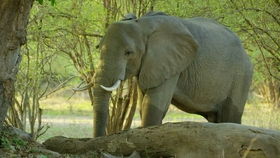
倒数日安卓版

- 文件大小:46.83MB
- 界面语言:简体中文
- 文件类型:Android
- 授权方式:5G系统之家
- 软件类型:装机软件
- 发布时间:2024-10-05
- 运行环境:5G系统之家
- 下载次数:504
- 软件等级:
- 安全检测: 360安全卫士 360杀毒 电脑管家
系统简介
Introduction to Predators

Predators are a fundamental aspect of the natural world, playing a crucial role in maintaining ecological balance. These animals, often characterized by their hunting instincts and specialized adaptations, have evolved to capture and consume other organisms. In this article, we will explore the various types of predators, their hunting techniques, and the ecological impact they have on their environments.
Types of Predators

Predators come in a wide variety of shapes and sizes, ranging from tiny insects to massive predators like sharks and lions. Here are some of the most common types of predators:
Carnivorous Mammals: These include lions, tigers, wolves, and bears, which primarily hunt for meat.
Reptiles: Snakes, lizards, and crocodiles are known for their stealthy hunting methods and powerful jaws.
Birds of Prey: Birds such as eagles, hawks, and owls have sharp vision and powerful talons for capturing their prey.
Fish: Predatory fish like sharks, pike, and barracuda are found in both freshwater and saltwater environments.
Insects: Many insects, such as dragonflies, mantises, and praying mantises, are skilled hunters that use their agility and speed to catch prey.
Hunting Techniques

Predators have developed a variety of hunting techniques to increase their chances of success. Here are some common methods:
Stealth and Ambush: Many predators, like the snake, rely on stealth and surprise to catch their prey off-guard.
Speed and Agility: Animals like cheetahs and pumas use their incredible speed and agility to chase down their prey.
Camouflage: Predators like the chameleon blend into their surroundings to approach their prey unnoticed.
Cooperation: Some predators, such as wolves, hunt in packs to take down larger prey.
Chemical Senses: Many predators have a keen sense of smell and taste, which helps them locate and identify their prey.
Adaptations for Hunting

Predators have evolved a range of adaptations to enhance their hunting abilities:
Sharp Senses: Many predators have excellent vision, hearing, and smell, which are crucial for detecting and tracking prey.
Strong Jaws and Teeth: Predators like lions and tigers have powerful jaws and sharp teeth to tear through flesh.
Agile Limbs: Animals like the jaguar have strong, flexible limbs that allow them to climb trees and pursue prey.
Camouflage: Many predators have coloration that helps them blend into their environment, making it easier to approach their prey.
Keen Hearing: Owls and other nocturnal predators have excellent hearing, which helps them locate prey in the dark.
Ecological Impact

Predators have a significant impact on their ecosystems. Here are some of the ways they influence their environments:
Population Control: Predators help regulate the populations of their prey, preventing overgrazing and maintaining the health of plant communities.
Prey Evolution: The constant pressure from predators drives the evolution of prey species, leading to adaptations that make them more difficult to catch.
Keystone Species: Some predators, like the wolf, are considered keystone species, meaning their presence or absence can have a profound effect on the entire ecosystem.
Food Chain Dynamics: Predators occupy the top of the food chain, influencing the distribution and abundance of other species.
Genetic Diversity: Predators can contribute to genetic diversity within their prey populations, which
常见问题
- 2025-04-27 无羞小说app手机最新版
- 2025-04-27 爸爸的私房钱
- 2025-04-27 黑暗女精灵DarkElf破解版
- 2025-04-27 新鲜水果连连看
装机软件下载排行

其他人正在下载
- 天体数藏app
- 液多多商户版
- 旺店通旗舰版手机版
- 小滴云手机官网版
- 小狐狸官方手机钱包
- tokenpocket官网下载
- Cobo钱包官网版
- tokenim官网下载
- TronLink正版钱包
- Math Wallet钱包官网版
系统教程排行
- 420次 1 安卓系统怎样看电池寿命,安卓系统电池寿命检测与延长技巧全解析
- 173次 2 开源的安卓系统,引领移动科技的创新与变革
- 704次 3 安卓系统上传图片压缩了,高效压缩与无损传输技巧
- 264次 4 安卓系统app半透明的,Android系统App半透明状态栏实现技巧解析
- 720次 5 安卓系统来电不显示黑屏,“安卓手机来电黑屏问题解析与解决方法”
- 597次 6 银豹收银系统手机安卓,助力商家智慧经营
- 707次 7 怎么安卓区转苹果系统,王者荣耀账号迁移全攻略
- 516次 8 UTM安装安卓系统问题,轻松实现iOS设备双系统体验
- 194次 9 手机安卓系统代码攻击,防御策略与应对措施
- 929次 10 安卓系统提取刷机包,安卓系统刷机包提取与生成指南






